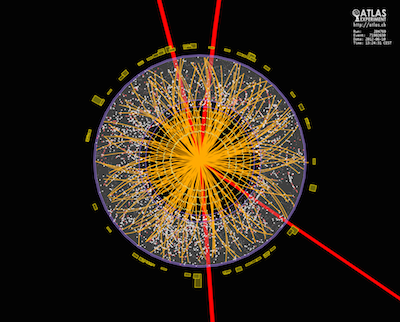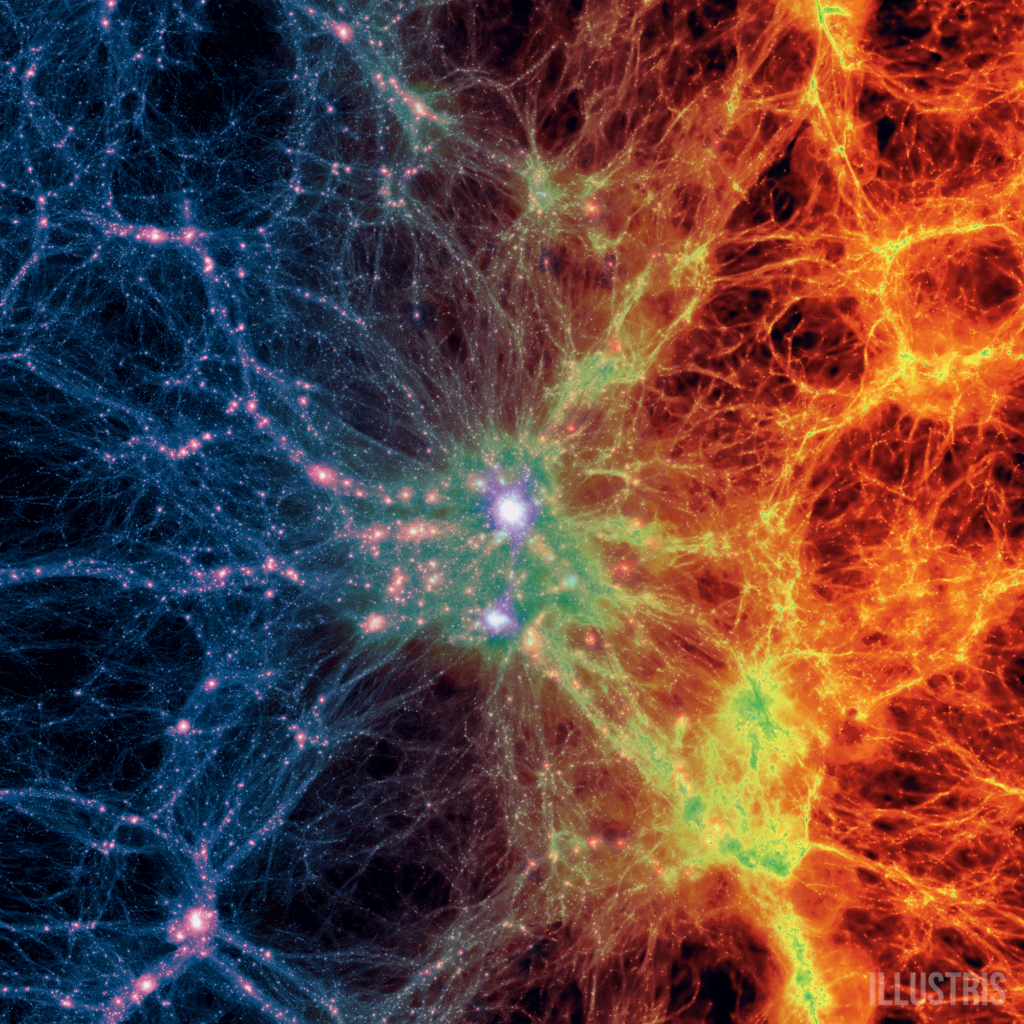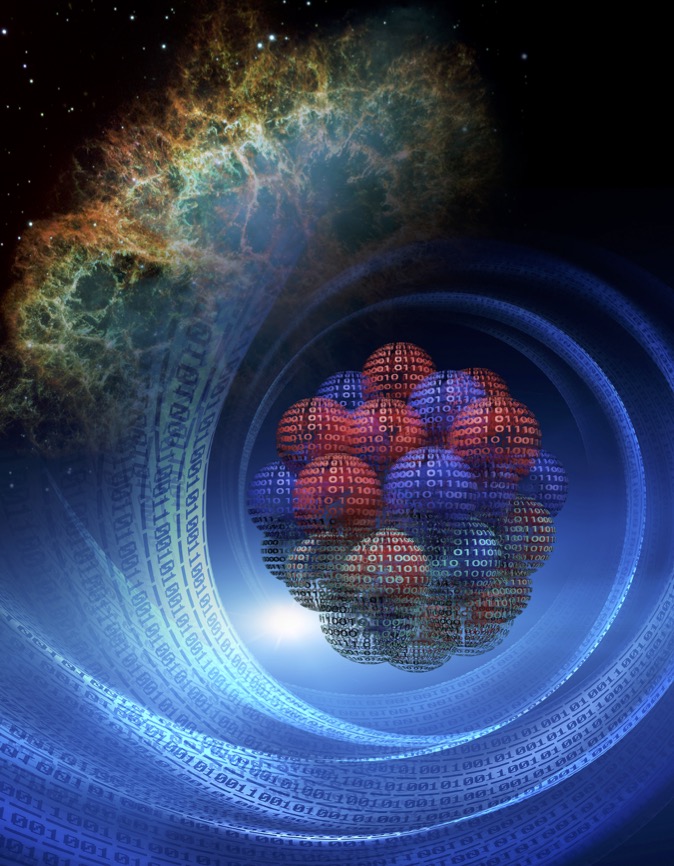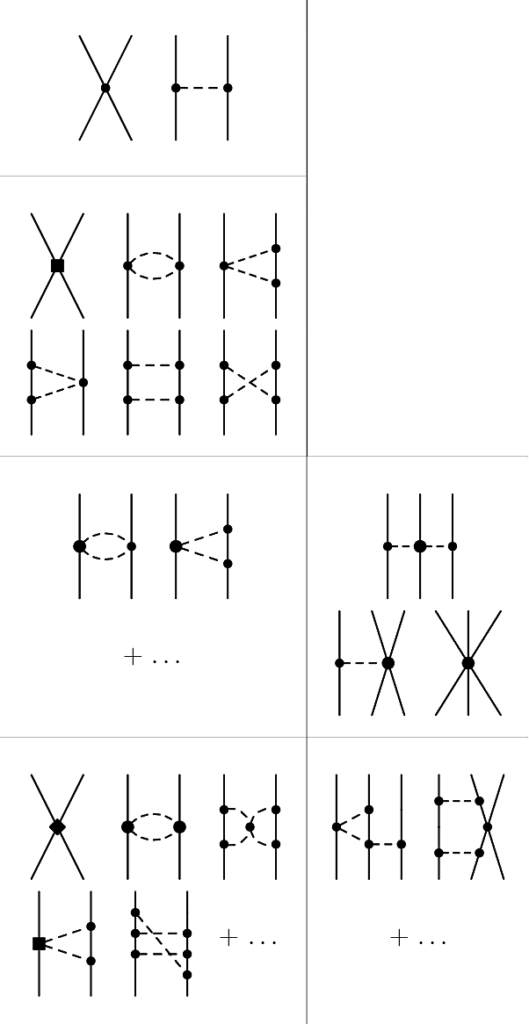Our research in theoretical subatomic physics is driven by curiosity and the urge to understand the underlying principles, laws, and forces that govern the world around us. Research opportunities in our group cover the full spectrum of theoretical subatomic physics, from elementary particle and nuclear physics to astroparticle physics.
Our activities in elementary particle physics are divided into a model building phase, where new ideas are implemented in a model, typically involving new particles or new interactions, and a simulation phase, where the model is used to predict some experimental outcome and cross checks with the already available experimental data are performed.
In nuclear physics, we develop microscopic approaches to study strongly-interacting, few- and many-body systems. The methodology is computational, quantum many-body theory, and the main focus is on addressing contemporary problems in low-energy nuclear physics, as well as in the fascinating field of ultracold atom physics.
Our research in astroparticle physics focuses on dark matter. We are interested in the theoretical modelling of dark matter-nucleon and -electron interactions, in computing the observable consequences of such interactions, and in designing strategies to experimentally test them.
In general, we are particularly fascinated by the separation of scales encountered in many physical systems; and we try to utilize these separations using, e.g., Effective Field Theories. At this web site you can find more background information and references on the specific research avenues that we are advancing.

Physics Beyond the Standard Model
Elementary particle physics is the study of the smallest known components of matter and their mutual interactions. The mathematical language for describing such particles is that of quantum field theory, the result of merging the theory of special relativity with quantum mechanics. How to fully merge general relativity and quantum mechanics is still an open issue.

Theoretical astroparticle physics
Astroparticle physics is the cross-disciplinary field of research that lies at the interface of particle physics, astrophysics and cosmology. Major topics in astroparticle physics include dark matter and dark energy, the cosmological properties of neutrinos, the origin of cosmic rays, and gravitational waves as a probe of violent cosmic processes. Our research in astroparticle physics mainly focuses on dark matter. We are interested in modelling the microscopic properties of dark matter, in computing their observable consequences, and in designing strategies to experimentally test them.

Ab initio nuclear theory
The atomic nucleus is a fascinating, strongly-correlated, self-bound, quantum many-body system. The building blocks are protons and neutrons that are themselves compound many-body structures composed of quarks and gluons. In low-energy nuclear physics, the underlying QCD degrees of freedom are not excited, but are rather manifested in a very complex internucleon force.

Effective field theory
The choice of degrees-of-freedom for a physical system is crucial for an efficient description. This was clearly expressed by Prof. Steven Weinberg in one of his fundamental rules for theoretical physicists: “You can use any degrees of freedom that you like to describe a physical system, but if you choose the wrong ones, you will be sorry.”
The choice of degrees-of-freedom is linked with the concept of basic constituents of a physical system. It defines, in a sense, what possible interactions should be present in the chosen model and will also set some limits on the possible accuracy that can be achieved. In addition, our choice also determines the breakdown scale of our theory. Given these insights we can introduce effective theories, as a tool to understand physics in general. Effective theories take the view that questions about a physical property come also with a statement of the scale at which the property is measured, or viewed.